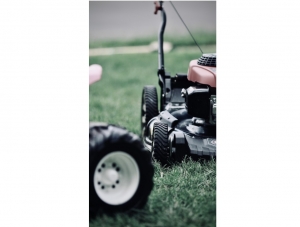The bathroom might not be the first place you think of when considering energy efficiency, but it's a surprising hotspot for electricity use in our homes. While kitchens often steal the spotlight in energy-saving discussions, bathrooms—with their combination of water heaters, electrical devices, and lighting—represent an untapped opportunity for meaningful savings. By making simple adjustments to how we use this space, we can significantly reduce both our monthly utility bills and our environmental footprint.
Understanding Bathroom Energy Use
Today's bathrooms house a surprising array of energy-hungry appliances: water heaters working overtime, ventilation fans running for hours, bright lighting fixtures, and an assortment of personal care devices. Though each might seem insignificant on its own, collectively these bathroom fixtures and appliances account for roughly 20% of a typical household's energy consumption. In practical terms, a standard bathroom with electric lighting, ventilation, and regularly used styling tools can add between $150-200 to your annual energy costs.
Kilowatt-hours (kWh) provide a concrete way to measure electricity consumption—representing the energy used when a 1,000-watt appliance runs for one hour. Understanding this measurement helps put real numbers behind bathroom energy use and spotlights where reductions can make the biggest difference.
The Role of Personal Care Appliances in Energy Consumption
Not all bathroom appliances are created equal when it comes to energy demand. While your electric toothbrush sips electricity, styling tools can gulp it down at alarming rates. That quick morning routine involving multiple devices adds up faster than you might realize.
Consider this scenario: in a family of four, if each person uses a hair dryer for just 10 minutes daily, this habit alone can add over $40 to your yearly energy bill. Most styling tools operate between 800-1800 watts, with wattage directly tied to both energy consumption and cost. What many people don't realize is that using the highest heat setting—often unnecessarily—dramatically increases power consumption without proportionally improving styling results.
Smart Strategies for Reducing Bathroom Energy Use
Small changes in your bathroom habits can lead to significant energy savings:
- Dial down to the lowest effective heat setting on styling tools
- Take the extra minute to towel-dry hair thoroughly before reaching for the electric dryer
- Completely unplug devices rather than leaving them in energy-draining standby mode
- Install occupancy sensors that automatically control bathroom lighting
- Swap out old incandescent bulbs for LED alternatives that slash energy use by 75%
When it's time to replace appliances, pay attention to energy efficiency ratings and look for models with multiple heat settings for more precise control. Features like automatic shut-off provide an added bonus, preventing wasteful operation when devices are momentarily set aside during use.
Focus Section: Hair Styling Tools and Their Energy Impact
Among bathroom appliances, styling tools deserve special scrutiny for effective energy management. Many households depend on devices such as hair dryers as non-negotiable parts of daily grooming, often without recognizing their substantial energy demands. Standard models consume between 1200-1875 watts during operation—equivalent to running 20 LED light bulbs simultaneously.
Efficiency varies dramatically across different models and technologies. Units with adjustable settings allow users to cut consumption by 30-50% simply by selecting lower heat and speed options. Meanwhile, newer technology incorporates sensors that regulate heat more precisely, reducing overall energy use while still delivering effective styling results.
Additional Ways to Create an Energy-Efficient Bathroom
Beyond managing your appliances, consider these broader improvements:
- Wrap hot water pipes with insulation to maintain temperature without additional heating
- Switch to low-flow showerheads to reduce hot water consumption
- Schedule periodic maintenance for ventilation fans to ensure they operate efficiently
- Harness natural light when possible through frosted windows or strategically placed skylights
- Choose lighter wall colors to maximize light reflection and reduce artificial lighting needs
Building Sustainable Bathroom Habits
The cumulative effect of small adjustments to bathroom routines can yield surprisingly meaningful energy savings over time. By identifying which appliances consume the most power and adopting more mindful usage patterns, you can make a real difference to both your environmental impact and monthly bills. Try implementing just one new energy-saving practice each week until these behaviors become second nature.
These individual choices may seem minor, but when multiplied across millions of households, they contribute significantly to broader energy conservation efforts. The bathroom—a space we all use multiple times daily—offers an accessible starting point for developing more sustainable habits throughout the home.






